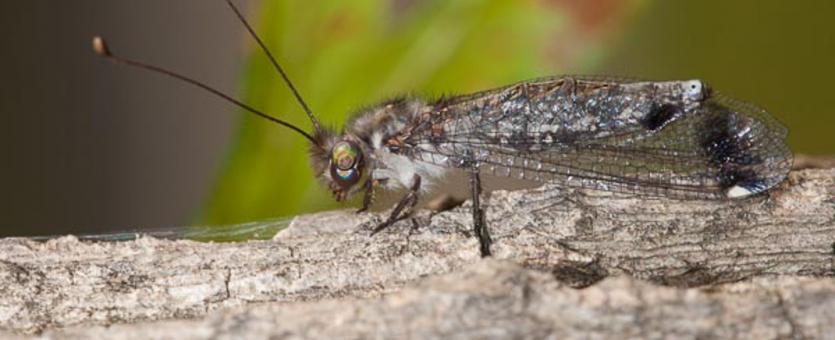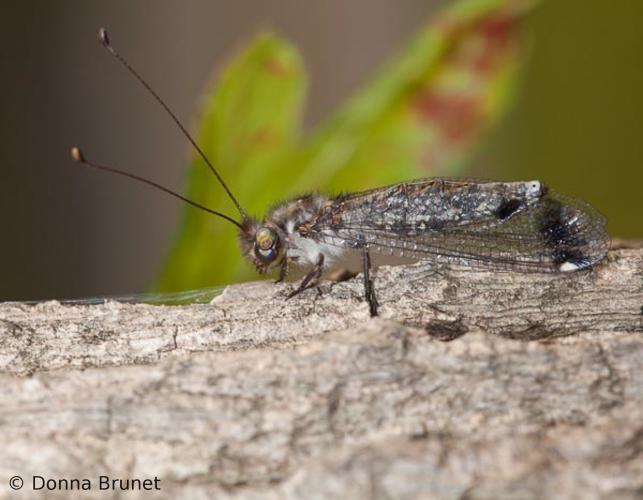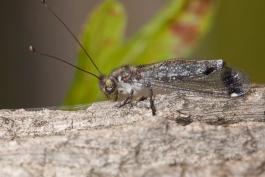
Owlflies look like dragonflies outfitted with butterfly heads. Dragonfly shaped and sized, they have long, clubbed antennae and large, bulging eyes. Some rest with their abdomens angled away from the perch, making their bodies look like twigs.
You can distinguish the two genera in our area by looking at the eyes: Those in genus Ululodes have a groove or crease in each eye; those in genus Ascaloptynx lack the groove. Then, if you’ve found the latter, you know the species, too, since there’s only one owlfly in that genus in North America, A. appendiculata, a beautiful insect with gold highlights.
The larvae are flattened, oval, segmented, gray, brown, or black insects with a distinct head and a pair of huge caliper-like mandibles that are usually held wide open. They look a lot like antlion larvae, but their bodies have a fringe of tiny finlike extensions along the two sides. Some species glue detritus (sand or other debris) to their backs for camouflage.

Habitat and Conservation
Food
Life Cycle
Human Connections
Most people figure that any insect that devours other insects is helpful.
People who appreciate insects just as they are truly enjoy seeing owlflies, which are bizarre, magnificent, harmless creatures not commonly seen.
The family name, Ascalaphidae, comes from Greek mythology, where a fellow called Ascalaphus was a caretaker of the orchard in the Underworld. He witnessed Persephone eating pomegranate seeds while she was abducted by Hades, and he basically snitches on her to the other deities. They were about to release her from the Underworld, but when they find out she had eaten the seeds, they force her to spend about half the year in the Underworld. Her mother, Demeter (goddess of the harvest), was so sad about her daughter's incarceration she made the world be unfruitful each year during the time Persephone was gone. Also, in her anger, Demeter punishes Ascalaphus by burying him under a boulder. Later, when someone releases him from this punishment, Demeter changes Ascalaphus into an owl.
Ecosystem Connections
At all life stages, owlflies are predators and therefore help control populations of the insects they prey on.
But their own camouflage and mimicry of twigs, the larvae’s gluing detritus on their backs, and possibly the “fencing” of trophic eggs, remind us that owlflies are preyed upon, too.
Most members of the owlfly family live in tropical regions.























